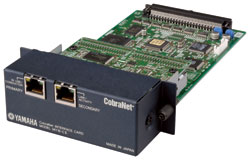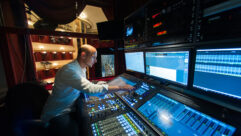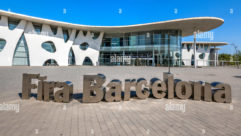

Test Your Knowledge of Digital Audio Networking
Pop Quiz: Test Your Knowledge of Digital Audio Networking
Match the digital audio technology with its partial description below. And for more on audio networking, see “What’s New Is Old.”
1. CobraNet
2. Ethernet AV
3. EtherSound
4. Dante
A. Shepherded by the IEEE, this standard is so far unofficial, though it’s at a point of “technical stability,” which means audio companies are making products with it included. It promises 2 milliseconds latency through seven Ethernet bridges; reservations for guaranteed bandwidth; and precise timing and synchronization services. While it has pro AV backing, its main push is into home networks and consumer devices.
B. Developed and licensed by a company called
Digigram, this ultra-low latency technology wasn’t designed to share Ethernet resources with anything other than AV traffic. It can handle up to 64 channels of 48 kHz, 24-bit PCM audio. It supports two-way communication in a daisy-chain topology and has been particularly popular in live sound applications because of its minimal point-to-point latency.
C. This type of digital audio is transmitted via Ethernet packets, but without using TCP/IP. Instead it uses link layer packets, which can move quickly, but not through routers. Latency is commonly cited as 5.33 milliseconds, but that can be improved by sending smaller packets more frequently. It’s a proprietary technology and therefore requires a license before it can be integrated into an audio device. It is typically used in large-scale projects where audio travels long distances.
D. From a company Down Under, here’s an Ethernet-based technology that does, indeed, use standard IP networking protocols. It counts Dolby, Lab.gruppen, and Peavey among licensees. Its emphasis is on ease-of-setup through its Zen protocol. Using a virtual soundcard, the system can access audio resources on a network. It’s been known to get 56 channels through 100 Mbps links in both directions.
Answers: 1, C; 2, A; 3, B; 4, D









